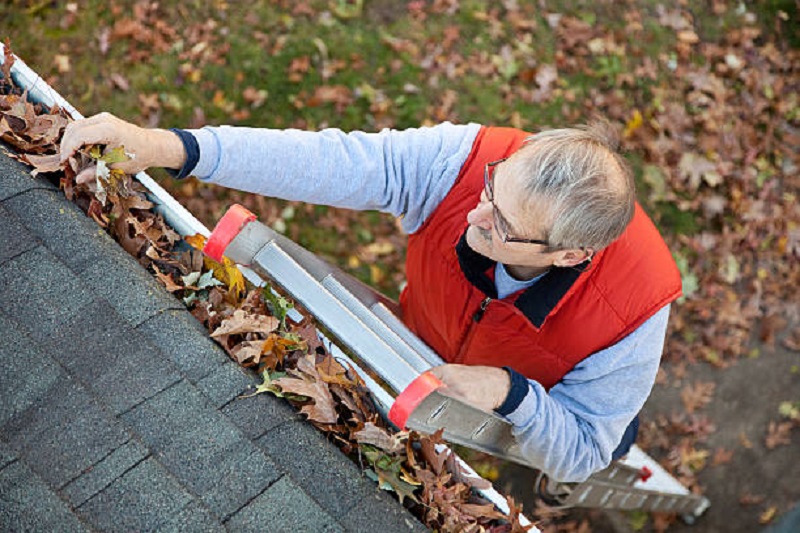Guttering: The Ultimate Guide to Protecting Your Home

Guttering is an essential component of any home, yet it is often overlooked and neglected. The primary function of guttering is to collect rainwater and channel it away from your home, preventing water damage to your roof, walls, and foundation. But with so many different gutter types, materials, and installation methods, it can be challenging to know where to start. This comprehensive guide aims to provide you with all the information you need to make informed decisions about your guttering needs. We’ll cover everything from gutter installation and maintenance to gutter repairs and types of gutter guards.
Why Guttering is Important
Guttering is crucial for several reasons, including:
– Preventing water damage: Without gutters, rainwater can accumulate around your home’s foundation, causing damage and potentially leading to costly repairs.
– Protecting your roof: Gutters help prevent water from pooling on your roof, which can lead to leaks and other issues.
– Preventing soil erosion: By directing rainwater away from your home, gutters help maintain the integrity of your landscaping and prevent soil erosion.
– Keeping your home looking its best: Properly functioning gutters can help prevent unsightly water stains and mold growth on your home’s exterior.
Types of Gutter Systems
There are several different types of gutter systems to choose from, including:
– K-style gutters: These are the most common type of gutter and have a flat back and bottom with a decorative front that resembles crown molding.
– Half-round gutters: These gutters have a semicircular shape and are often used on older homes or those with a more traditional design.
– Box gutters: Typically used on commercial buildings, box gutters are wide and flat and can handle large volumes of water.
– Custom gutters: Some homeowners opt for custom gutters that are designed specifically for their home’s unique architecture.
Gutter Materials and Their Pros and Cons
Gutters can be made from various materials, each with its own set of advantages and disadvantages:
– Aluminum: Lightweight, rust-resistant, and available in a variety of colors, aluminum gutters are a popular choice for many homeowners. However, they can be prone to denting and may not be suitable for areas with heavy snowfall.
– Vinyl: Vinyl gutters are affordable, low-maintenance, and easy to install, making them an attractive option for DIYers. However, they can become brittle over time and may not hold up well in extreme temperatures.
– Steel: Steel gutters are strong and durable, but they can be heavy and prone to rust if not properly maintained.
– Copper: Copper gutters are highly durable and resistant to rust, but they can be expensive and require professional installation.
– Zinc: Like copper, zinc gutters are long-lasting and resistant to corrosion, but they can also be pricey and require professional installation.

Gutter Installation: DIY vs. Professional
Gutter installation can be a DIY project for those with the necessary skills and tools. However, there are several advantages to hiring a professional, including:
– Expertise: Professional gutter installers have the knowledge and experience to ensure your gutters are installed correctly and efficiently.
– Customization: Professionals can create custom gutters tailored to your home’s specific needs and design.
– Warranty: Many professional gutter installation companies offer warranties on their work, providing added peace of mind.
Gutter Maintenance and Cleaning
Regular gutter maintenance is essential to keep your gutters functioning properly and prevent damage to your home. Maintenance tasks include:
– Inspecting your gutters for damage, such as cracks or leaks, and making necessary repairs.
– Cleaning your gutters at least twice a year to remove debris, such as leaves and twigs, that can cause clogs and impede water flow.
– Checking and adjusting gutter hangers and brackets to ensure your gutters are secure and properly aligned.
Gutter Repairs: When and How
Gutter repairs should be made as soon as any issues are identified to prevent further damage to your home. Common gutter repairs include:
– Sealing leaks: Small leaks can often be repaired with a waterproof sealant, while larger leaks may require replacing the affected section of gutter.
– Realigning gutters: If your gutters are sagging or not properly sloped, they may need to be realigned to ensure proper water flow.
– Replacing damaged sections: Damaged or rusted sections of gutter should be replaced to maintain the integrity of your gutter system.
Gutter Guards: Are They Worth It?
Gutter guards are designed to keep debris out of your gutters, reducing the need for regular cleaning and maintenance. There are several types of gutter guards, including mesh screens, foam inserts, and surface-tension guards. While gutter guards can be beneficial, they are not foolproof and may still require occasional cleaning. Additionally, some gutter guards can be expensive and may not be compatible with all gutter types.
Conclusion
Proper guttering is essential for protecting your home from water damage and maintaining its overall appearance. By understanding the different types of gutter systems, materials, and maintenance requirements, you can make informed decisions about your guttering needs. Whether you choose to tackle gutter installation and maintenance yourself or hire a professional, regular care and attention to your gutters will help ensure your home stays safe and dry for years to come.
-
-
-
-
/ 0 Comments